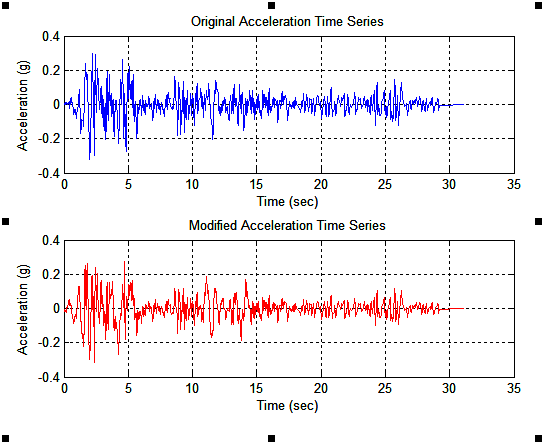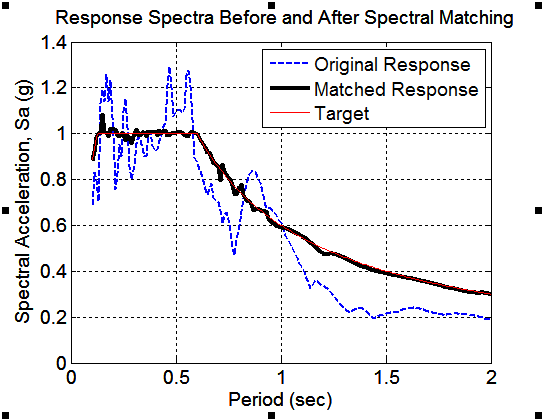Nov 2012
Development of a Spectral Matching Algorithm
Time domain spectral matching of an earthquake ground motion consists of iteratively adding sets of wavelets to an acceleration history until the resulting response spectrum sufficiently matches a target spectrum. The spectral matching procedure is at its core a nonlinear problem because the addition of a wavelet often causes shifting in the time of peak response or creation of a larger second peak at a different time. A modification to existing time domain spectral matching algorithms was developed using Broyden updating for solving the set of nonlinear equations. A set of wavelet bases were evaluated to determine the most most appropriate for the spectral matching algorithm based on their frequency resolution, time resolution, propensity to alter neighboring spectral ordinates, and their effect on ground motion energy and nonstationarity. The Improved Tapered Cosine wavelet was selected based on these criteria.
The proposed algorithm has been tested and compared with other methods that are commonly used for spectral matching. The results show that the proposed algorithm is able to match the target spectrum while reasonably preserving the spectral nonstationarity, energy development and the frequency content of the original time histories.
Adekristi, A. (2013) Algorithm for Spectral Matching of Earthquake Ground Motions Using Wavelets and Broyden Updating, M.S. Thesis, Virginia Tech
Adekristi, A., and Eatherton, M.R. (2016) “Spectral Matching Algorithm using Wavelets and Broyden Nonlinear Solution Scheme” Journal of Earthquake Engineering, Vol. 20, No. 5, pp. 679-698, DOI: 10.1080/13632469.2015.1104753.
Adekristi, A., and Eatherton, M.R. (2015) “Spectral Matching Program using Broyden Updating” Software available through VTechworks at https://vtechworks.lib.vt.edu/handle/10919/51839
More Research:
- Buckling Restrained Brace Subassemblage Testing
- Testing of Steel Crates
- End-Plate Moment Connections
- Self-Centering Beams for Resilient Earthquake Resistance
- Ring-Shaped Steel Plate Shear Walls
- Super High Tension Bolts
- Effect of Fasteners and Defects in the Protected Zone on the Performance of Moment Frames
- Controlled Rocking of Steel Braced Frames with Replaceable Energy Dissipating Fuses
- Development of a Self-Centering Buckling Restrained Brace
- Understanding Structural Response During Earthquakes Using Wavelet Transforms
- Characterizing Hysteretic Behavior of Cold-Formed Steel Members and Connections


